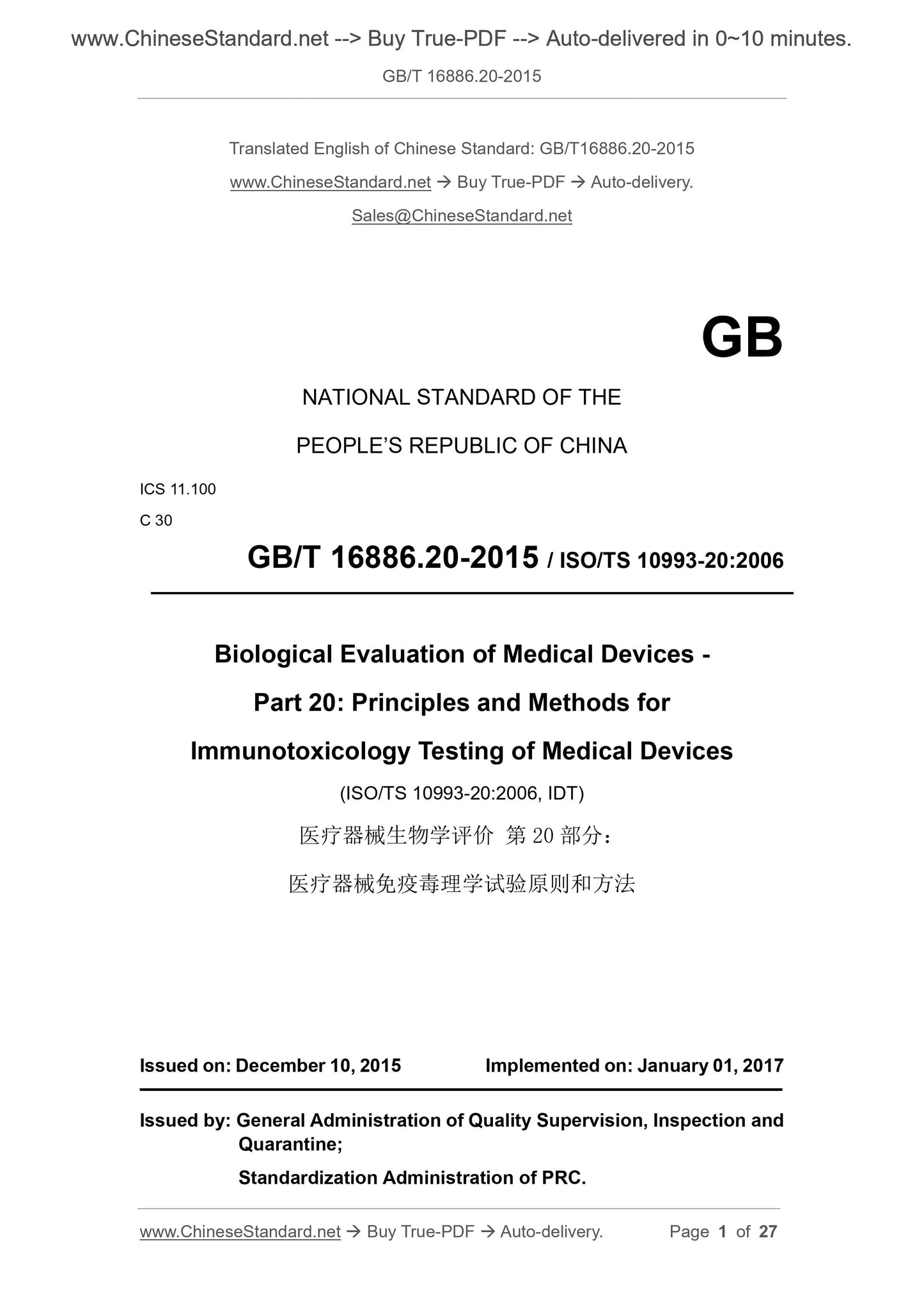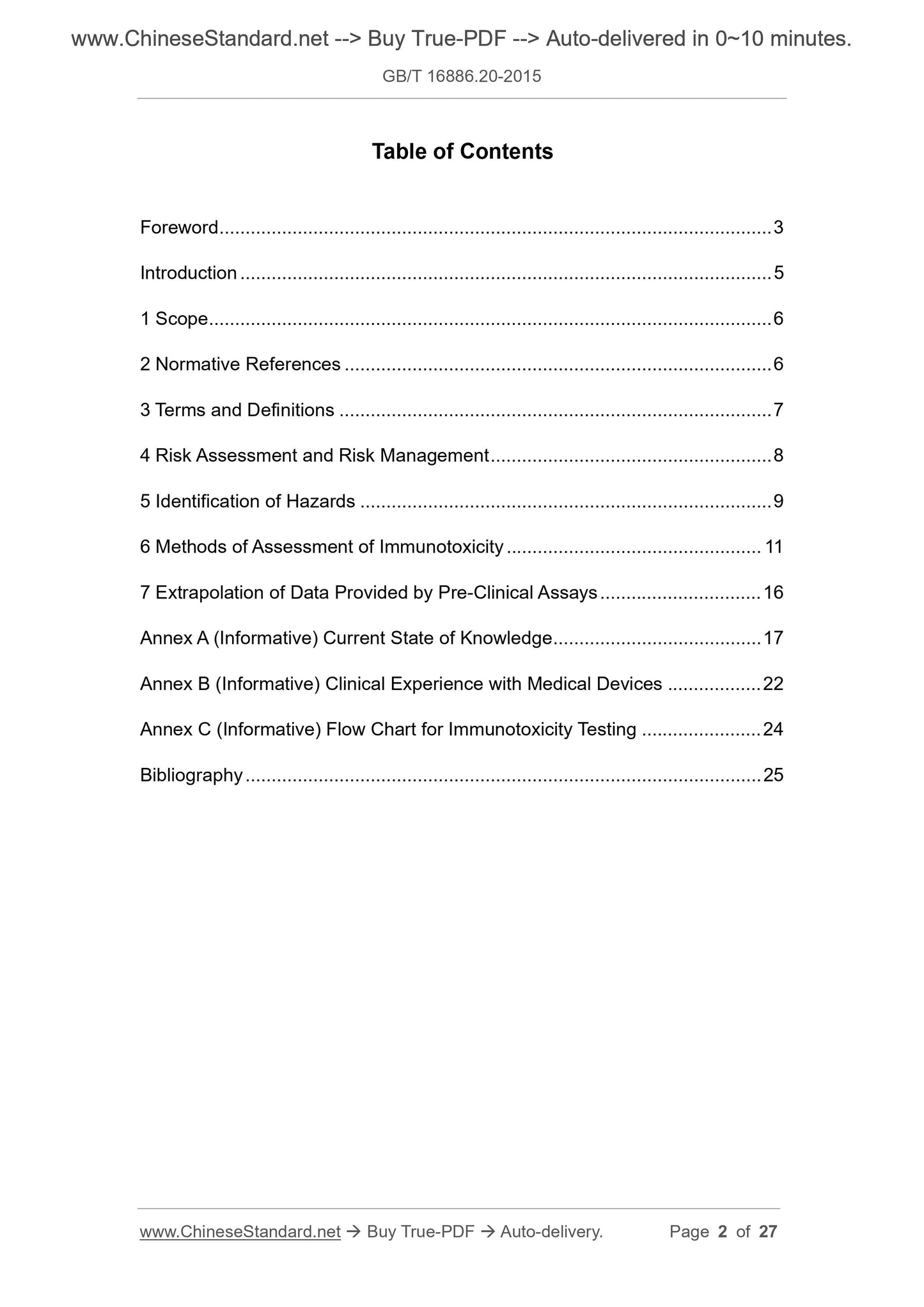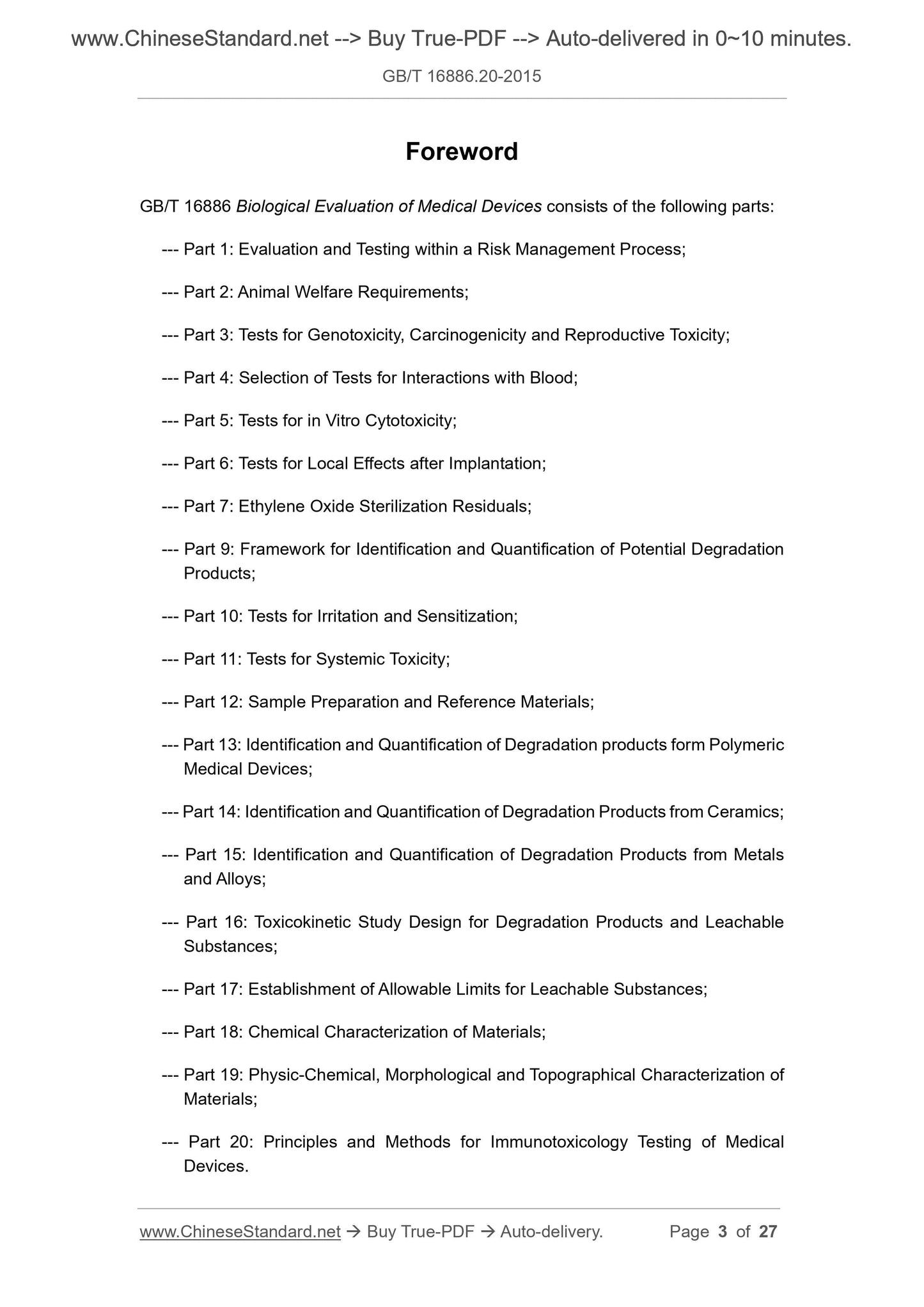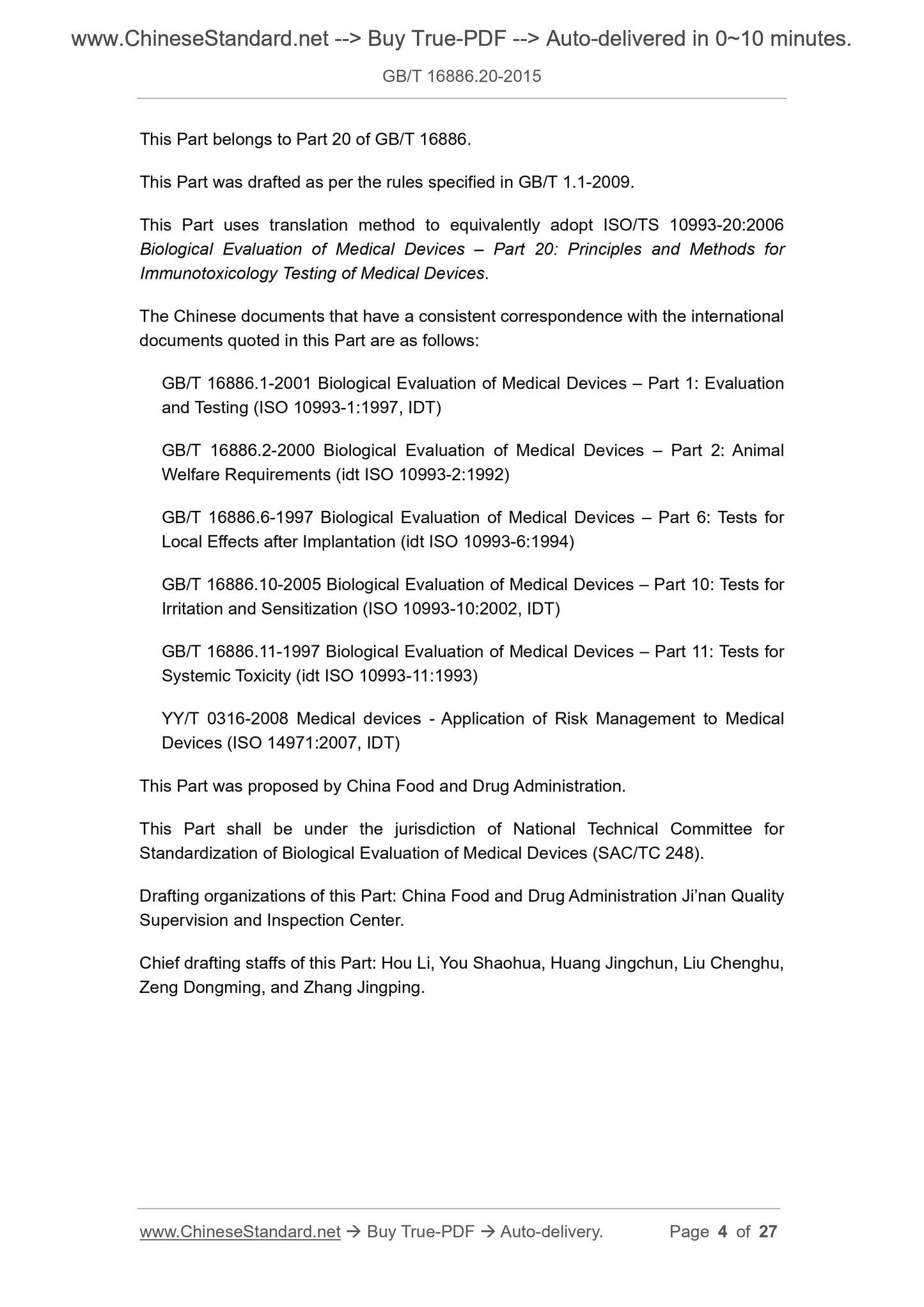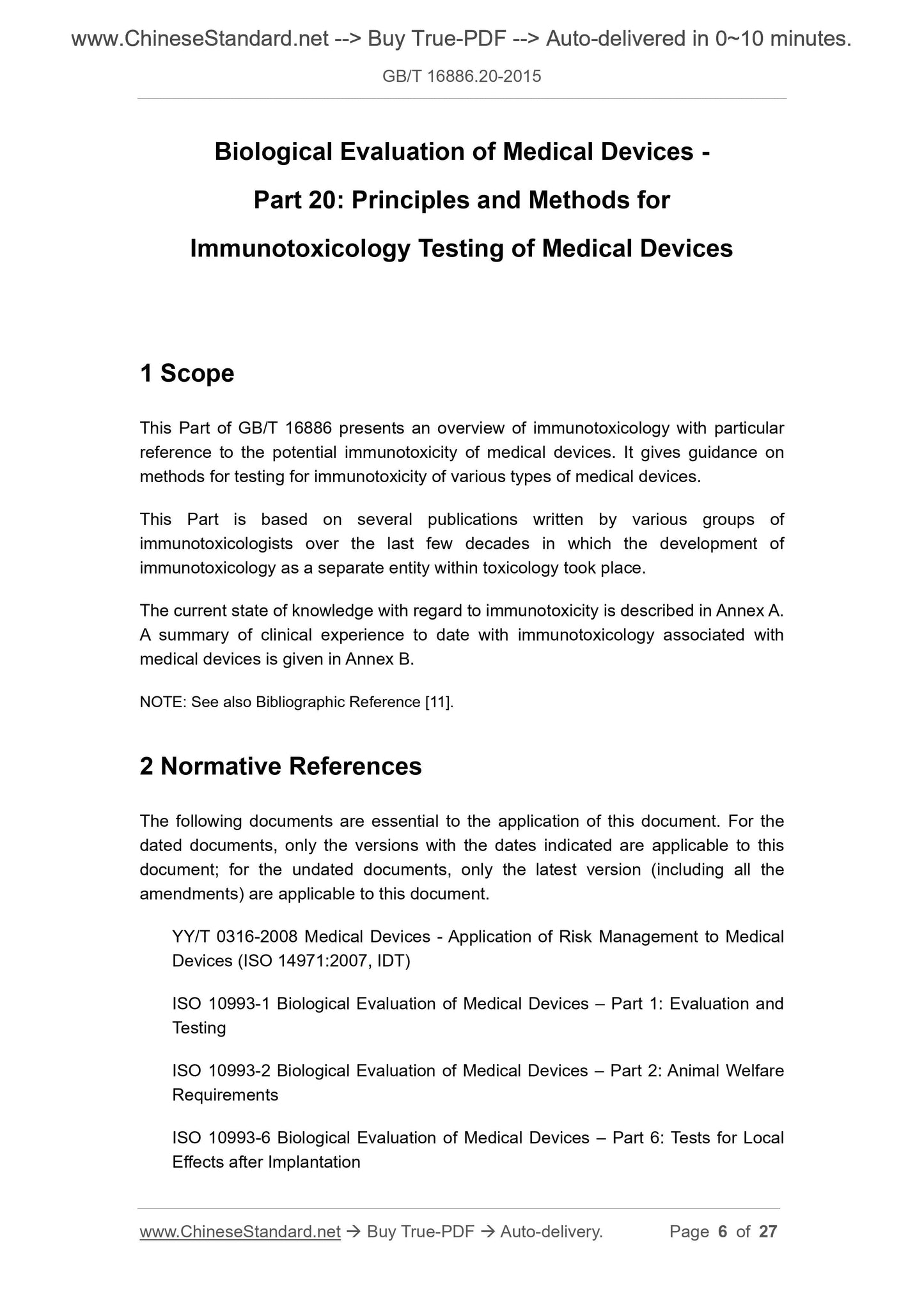1
/
of
5
www.ChineseStandard.us -- Field Test Asia Pte. Ltd.
GB/T 16886.20-2015 English PDF (GB/T16886.20-2015)
GB/T 16886.20-2015 English PDF (GB/T16886.20-2015)
Regular price
$150.00
Regular price
Sale price
$150.00
Unit price
/
per
Shipping calculated at checkout.
Couldn't load pickup availability
GB/T 16886.20-2015: Biological evaluation of medical devices -- Part 20: Principles and methods for immunotoxicology testing of medical devices
Delivery: 9 seconds. Download (and Email) true-PDF + Invoice.Get Quotation: Click GB/T 16886.20-2015 (Self-service in 1-minute)
Newer / historical versions: GB/T 16886.20-2015
Preview True-PDF
Scope
This section of GB/T 16886 gives an overview of the immunotoxicology of the potential immunotoxicity of medical devices. This section also givesA guide to methods for testing the immunotoxicity of different types of medical devices.
This section is based on several publications written by different groups of immunotoxicologists over the past few decades, with immunotoxicology as
An independent branch within the toxicology category is developing.
The current cognitive status of immunotoxicity is described in Appendix A, and Appendix B gives the immunotoxicity associated with medical devices to date.
An overview of the clinical experience of science.
Note. See reference [11].
Basic Data
| Standard ID | GB/T 16886.20-2015 (GB/T16886.20-2015) |
| Description (Translated English) | Biological evaluation of medical devices -- Part 20: Principles and methods for immunotoxicology testing of medical devices |
| Sector / Industry | National Standard (Recommended) |
| Classification of Chinese Standard | C30 |
| Classification of International Standard | 11.100 |
| Word Count Estimation | 19,194 |
| Date of Issue | 2015-12-10 |
| Date of Implementation | 2017-01-01 |
| Regulation (derived from) | National Standard Announcement 2015 No.38 |
| Issuing agency(ies) | General Administration of Quality Supervision, Inspection and Quarantine of the People's Republic of China, Standardization Administration of the People's Republic of China |
Share
